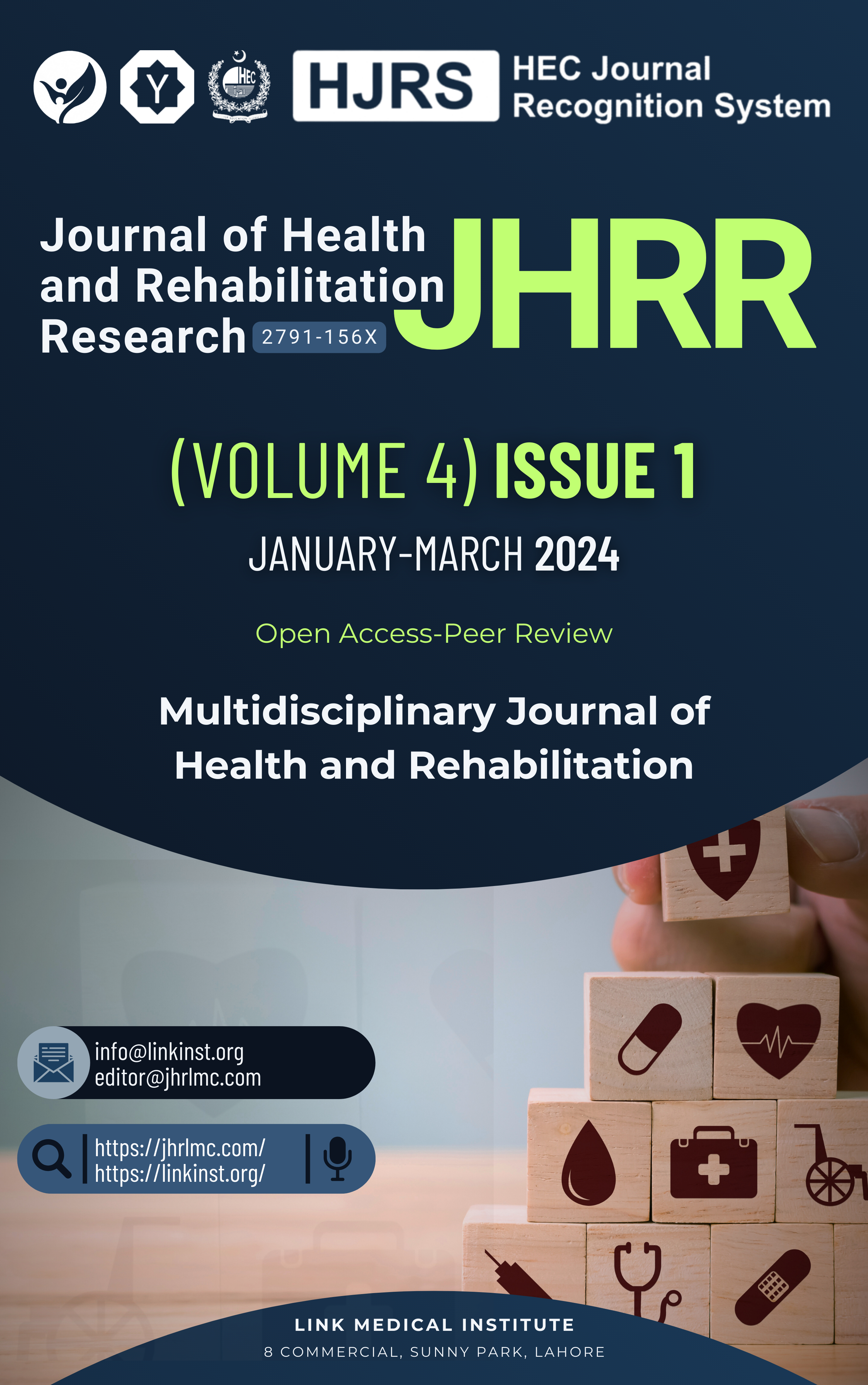Unraveling the Complexity of Interferon Regulatory Factor 8: Insights into Structure, Function, and Therapeutic Potential
DOI:
https://doi.org/10.61919/jhrr.v4i1.614Keywords:
IRF8, immune regulation, transcription factor, protein structure, gene expression, post-translational modification, protein-protein interaction, SNP, splice variant, drug target, bioinformaticsAbstract
Background: Interferon Regulatory Factor 8 (IRF8) is a transcription factor integral to the immune system, orchestrating various aspects of immune response regulation. Previous studies have established IRF8’s role in myeloid cell differentiation and have linked it to several immune disorders. However, the full scope of its genetic variability, functional domains, and interaction networks remained insufficiently characterized.
Objective: This study aimed to conduct a comprehensive analysis of the IRF8 gene and protein to explore its structure, function, regulatory mechanisms, and potential as a therapeutic target.
Methods: We utilized a combination of bioinformatics tools to map the genomic location of IRF8, predict its protein structure, and identify functional domains. Gene and protein expressions were profiled using public databases, and post-translational modifications were predicted through specialized software. Protein-protein interaction networks were examined using the STRING database, and potential drug-binding pockets were identified via the DoGSite scorer. Splice variants and polymorphisms were assessed for clinical significance, and subcellular localization was predicted using several computational tools.
Results: The IRF8 gene was confirmed to encode a protein of 426 amino acids, with no methylation sites predicted. Its expression was notably higher in lymphoid tissues, and it exhibited extensive nuclear localization. We identified 11 splice variants and 11,168 single nucleotide polymorphisms (SNPs), with varying implications for pathogenicity. The protein interactome analysis revealed a central role in immune signaling pathways. Moreover, several high-affinity drug-binding pockets were identified, suggesting IRF8 as a promising therapeutic target.
Conclusion: The study provided detailed insights into the IRF8 gene and protein, suggesting significant regulatory complexity and highlighting its potential in disease pathogenesis and therapy. Our findings support the role of IRF8 as a pivotal element in immune response and offer a foundation for the development of novel therapeutic approaches.
Downloads
References
Nehyba J, Hrdličková R, Burnside J, Bose Jr HR. A novel interferon regulatory factor (IRF), IRF-10, has a unique role in immune defense and is induced by the v-Rel oncoprotein. Molecular and cellular biology. 2002;22(11):3942-57.
Yang J, Hu X, Zimmerman M, Torres CM, Yang D, Smith SB, et al. Cutting edge: IRF8 regulates Bax transcription in vivo in primary myeloid cells. The Journal of Immunology. 2011;187(9):4426-30.
Yang D, Thangaraju M, Greeneltch K, Browning DD, Schoenlein PV, Tamura T, et al. Repression of IFN regulatory factor 8 by DNA methylation is a molecular determinant of apoptotic resistance and metastatic phenotype in metastatic tumor cells. Cancer research. 2007;67(7):3301-9.
Connelly TM, Berg AS, Harris III LR, Hegarty JP, Ruggiero FM, Deiling SM, et al. T-cell activation Rho GTPase–activating protein expression varies with inflammation location and severity in Crohn's disease. journal of surgical research. 2014;190(2):457-64.
Chen R, Stahl E, Kurreeman F, Gregersen P, Siminovitch K, Worthington J, et al. Fine mapping the TAGAP risk locus in rheumatoid arthritis. Genes & Immunity. 2011;12(4):314-8.
Zhou L, Ma Q, Shi H, Huo K. NUMBL interacts with TRAF6 and promotes the degradation of TRAF6. Biochemical and biophysical research communications. 2010;392(3):409-14.
Zhu G, Cheng Z, Huang Y, Zheng W, Yang S, Lin C, et al. TRAF6 promotes the progression and growth of colorectal cancer through nuclear shuttle regulation NF-kB/c-jun signaling pathway. Life sciences. 2019;235:116831.
Patel AM, Marsh ENG. The antiviral enzyme, viperin, activates protein ubiquitination by the E3 ubiquitin ligase, TRAF6. Journal of the American Chemical Society. 2021;143(13):4910-4.
McWilliam H, Li W, Uludag M, Squizzato S, Park YM, Buso N, et al. Analysis tool web services from the EMBL-EBI. Nucleic acids research. 2013;41(W1):W597-W600.
Garg VK, Avashthi H, Tiwari A, Jain PA, Ramkete PW, Kayastha AM, et al. MFPPI–multi FASTA ProtParam interface. Bioinformation. 2016;12(2):74.
Emanuelsson O, Brunak S, Von Heijne G, Nielsen H. Locating proteins in the cell using TargetP, SignalP and related tools. Nature protocols. 2007;2(4):953.
He X, Chang S, Zhang J, Zhao Q, Xiang H, Kusonmano K, et al. MethyCancer: the database of human DNA methylation and cancer. Nucleic acids research. 2007;36(suppl_1):D836-D41.
Julenius K. NetCGlyc 1.0: prediction of mammalian C-mannosylation sites. Glycobiology. 2007;17(8):868-76.
Gupta R, Jung E, Brunak S. Prediction of N-glycosylation sites in human proteins. 2004.
Steentoft C, Vakhrushev SY, Joshi HJ, Kong Y, Vester‐Christensen MB, Schjoldager KTB, et al. Precision mapping of the human O‐GalNAc glycoproteome through SimpleCell technology. The EMBO journal. 2013;32(10):1478-88.
Blom N, Sicheritz‐Pontén T, Gupta R, Gammeltoft S, Brunak S. Prediction of post‐translational glycosylation and phosphorylation of proteins from the amino acid sequence. Proteomics. 2004;4(6):1633-49.
Duckert P, Brunak S, Blom N. Prediction of proprotein convertase cleavage sites. Protein Engineering Design and Selection. 2004;17(1):107-12.
Szklarczyk D, Franceschini A, Kuhn M, Simonovic M, Roth A, Minguez P, et al. The STRING database in 2011: functional interaction networks of proteins, globally integrated and scored. Nucleic acids research. 2010;39(suppl_1):D561-D8.
Zheng H, Liu Y, Deng Y, Li Y, Liu S, Yang Y, Qiu Y, Li B, Sheng W, Liu J, Peng C. Recent advances of NFATc1 in rheumatoid arthritis-related bone destruction: mechanisms and potential therapeutic targets. Molecular Medicine. 2024 Feb 3;30(1):20.
Liang XZ, Liu XC, Li S, Wen MT, Chen YR, Luo D, Xu B, Li NH, Li G. IRF8 and its related molecules as potential diagnostic biomarkers or therapeutic candidates and immune cell infiltration characteristics in steroid-induced osteonecrosis of the femoral head. Journal of Orthopaedic Surgery and Research. 2023 Jan 10;18(1):27.
Downloads
Published
How to Cite
Issue
Section
License
Copyright (c) 2024 Fazal Shan, Hassan Khan , Hamza Ali, Khalil Ullah , Muhammad Ibrahim Rasheed

This work is licensed under a Creative Commons Attribution 4.0 International License.
Public Licensing Terms
This work is licensed under the Creative Commons Attribution 4.0 International License (CC BY 4.0). Under this license:
- You are free to share (copy and redistribute the material in any medium or format) and adapt (remix, transform, and build upon the material) for any purpose, including commercial use.
- Attribution must be given to the original author(s) and source in a manner that is reasonable and does not imply endorsement.
- No additional restrictions may be applied that conflict with the terms of this license.
For more details, visit: https://creativecommons.org/licenses/by/4.0/.






